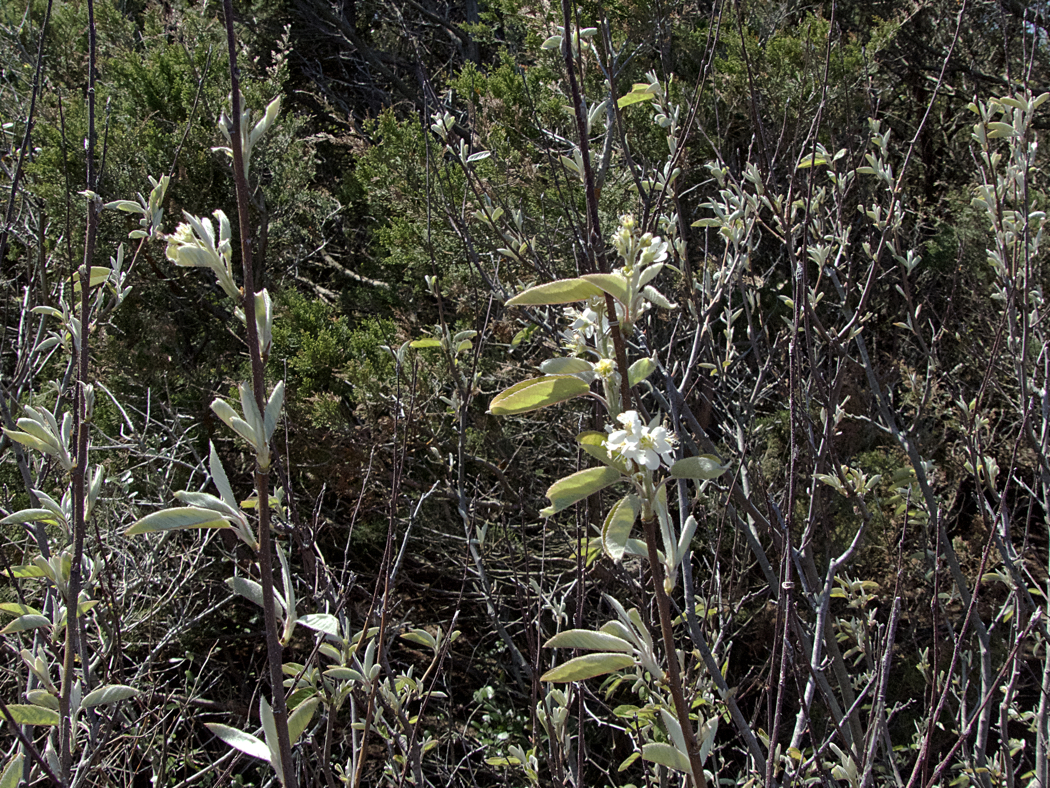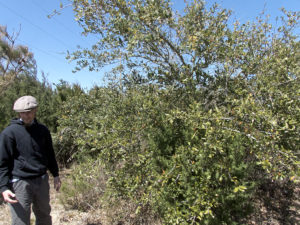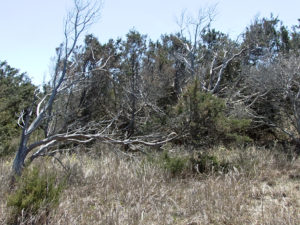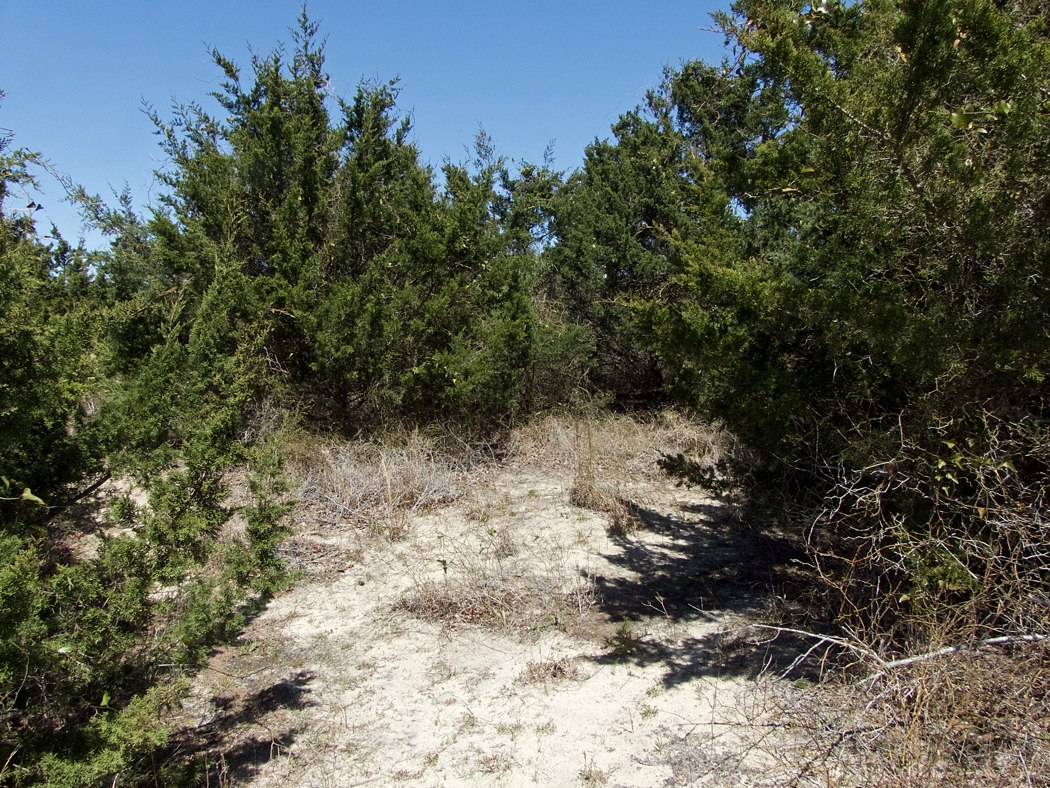A rare maritime forest may be key to preserving Beachcomber Museum.

There’s a patch of land in Nags Head that’s about to be auctioned off. It is a small but remarkable property, although from the Bypass it doesn’t look like much; some scrub pine, sand and beach grass is all that is seen. Eight auction blocks, right around three acres.
The property is just to the south and west of the Nellie Myrtle Pridgen Outer Banks Beachcomber Museum, and Chaz Winkler, who with Dorothy Hope, operates the museum in Nags Head is searching for a way to move the museum to a small patch of the property.
The configuration of the land the museum sits on now, will not allow any of the improvements needed to keep museum open full time.
But to Winkler and Hope the the eight auction blocks of the land are more than an opportunity to relocate. To them, it is an chance to preserve something important in the heritage of the Outer Banks.
It is a remarkable strip of terrain, filled with history and containing a small but rare maritime forest.
At one time the south end of the property was a pasture and there is still evidence of that. It was part of the land the old Hollowell Hotel owned—a historic hotel that linked the early 20th century tourist industry of the Roanoke Sound with the ocean beach. The south end of the block of land was the pasture. Weathered and bleached by the sun, some of the old posts still remain.
“The traditional use of the land was agricultural. They had cows as a way to get their milk,” Winkler said.

Unseen from the road, a small but surprisingly diverse forest thrives.
Dan Hossack, a registered horticulturalist, walks through the forest with us and he explains the significance of what we are seeing. “It’s a maritime forest,” he says. “But it’s a rare type. It’s an evergreen maritime forest.”
Loblolly pines thrive here; these, however, are not the straight, towering trees planted for harvest. Intense in their greenery, they are, like almost all beach trees, stunted in their growth by the salt winds of the Atlantic.
There is cedar here as well, twisted into spectacular shapes by the relentless forces of nature. There is one in particular that stands as a testament to survival, the entire eastern facing side of the plant stripped of any semblance of life, yet one branch, protected from the most harsh impacts of the elements thrives and sustains the entire tree.

Dan points to a flowering bush-like plant. “That’s a Rabbit eye blueberry. It does very well in beach environments.”
There is a beautiful white flowers on a bush or small tree with thin branches. “That’s shad bush downy,” he says.
The forest is a small treasure, something undisturbed for centuries even among the ever-growing and expanding the Outer Banks tourist industry that first began in Nags Head.
Chaz sees a small piece of the land as an opportunity for a new location for the Beachcomber’s Museum, but part of the grounds would also be that patch of forest linking the modern world to an ancient time.
Bidding on the auction for the land will end April 25.
Kip Tabb, HOBX Correspondent
